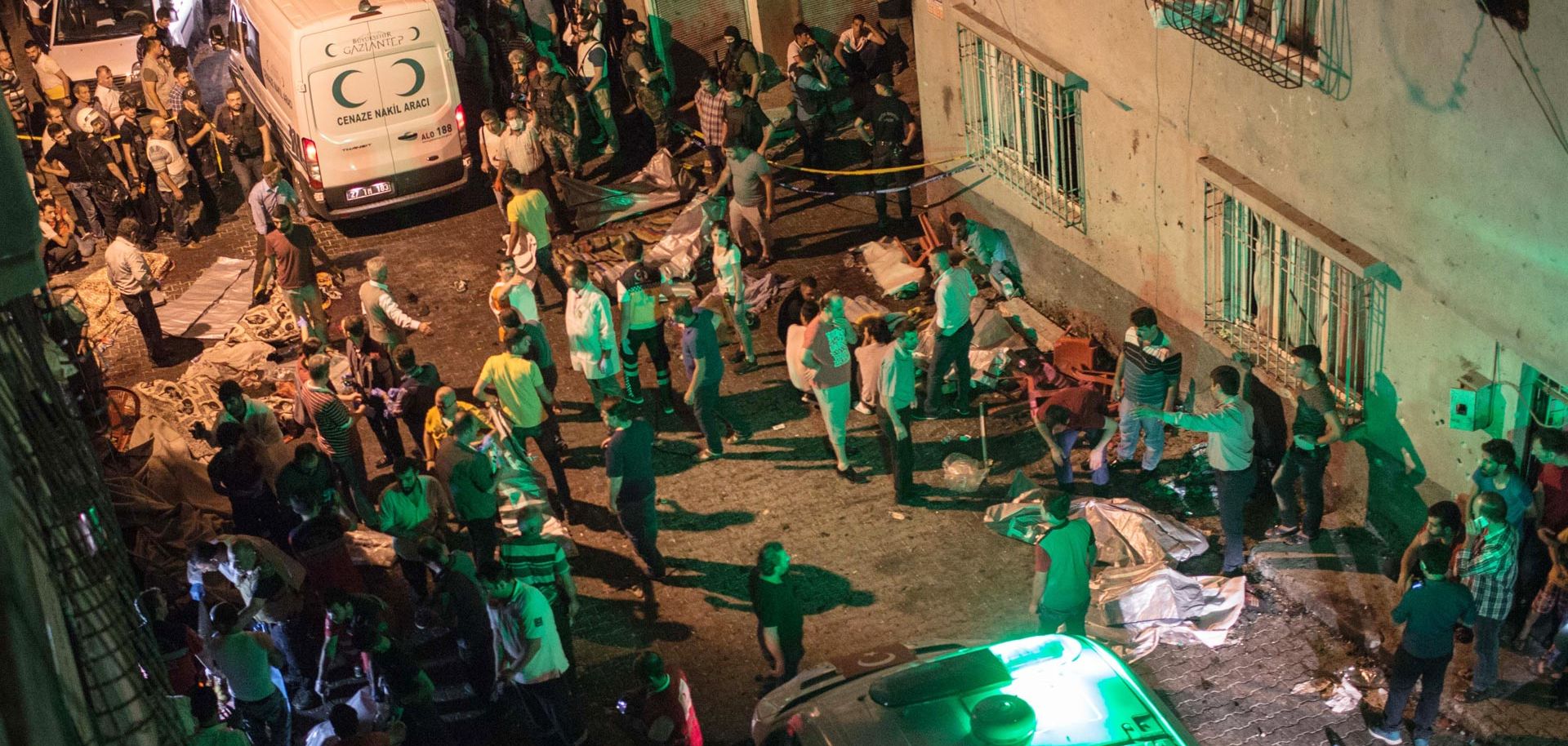COLUMNS
The Islamic State in 2017: Rotting From the Outside In

Jan 12, 2017 | 08:03 GMT

The scene of an explosion on Aug. 20, 2016, in Gaziantep, Turkey, after a late-night militant attack on a wedding party that Turkish President Recep Tayyip Erdogan said the Islamic State was behind.
(AHMED DEEB/AFP/Getty Images)
Editor's Note
For the past few years, Stratfor has provided an annual forecast for the jihadist movement in a series of Security Weekly pieces. With the launch of Stratfor's Threat Lens product, the way this forecast is presented has changed. Stratfor will still publish three Security Weeklies covering the Islamic State camp, the al Qaeda camp and grassroots jihadists. However, an additional in-depth report will be made available to Threat Lens subscribers. This will contain the entirety of our forecast for the jihadist movement in 2017, of which the weeklies are excerpts.
Subscribe Now
SubscribeAlready have an account?
